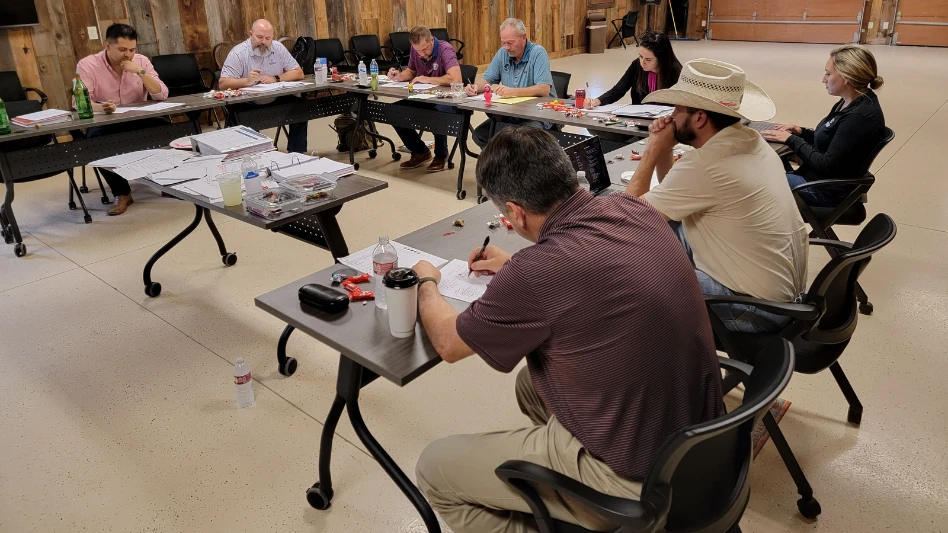|
The more savvy you are when it comes to taxes, the more money you will have in your pocket at the end of the year. The tax code allows you to deduct costs of doing business from your gross income. What you are left with is your net business profit. This is the amount that gets taxed. Knowing how to maximize your deductible business expenses lowers your profit and therefore your taxes.
The income tax rules suggest that an expense must be “an ordinary and necessary expense of carrying on a trade or business that is paid or incurred in the tax year.” In practice, “ordinary” usually refers to expenses that are ongoing such as fuel for your trucks or the chemicals that your technicians apply, but can also mean something you pay once, such as the installation of Internet lines in your office. So as long as these deductions are reasonable, which the IRS states is based on the facts and circumstances of each particular situation, it’s probably a safe deduction.
What records do I need to retain?
In order to deduct an expense, the professional lawn care business owner should be able to provide evidence that supports what the deduction was for as well as proving that it was paid. The deduction should include a receipt or invoice along with a cancelled check or some other evidence that it was paid such as a credit card receipt.
So How Long Do I need to Keep These Records? Generally, you will need to keep all records that support items on your tax return for at least four years, since the IRS may challenge your return for up to three years after its filing date. However, certain items need to be kept longer. Anything that may support a position on your tax return in the future should be retained until four years after that return is filed. An example would be a building that you purchase for $500,000, you then pay $40,000 for a parking lot to be put in. You would want to save the paperwork and proof of payment for the purchase price of the building as well as the parking lot until four years after you sell the property and report a gain or loss on your tax return.
In practice, during an audit, if you don’t have all the records of a particular transaction, but it’s obvious you must have incurred it, the IRS may estimate the amount of a deduction. An example might be if you could not produce records of chemical purchases, the IRS may allow the deduction based on industry standards (I am not suggesting this is the way anyone should prove chemical expense as undoubtedly you will come up on the short end). However, if you are not able to produce 100 percent of the records, all may not be lost.
So what tax deduction gives the biggest bang for the buck?
Two words: asset acquisition. What if you like so many of my clients are showing a large profit that puts you in a position where you will owe taxes? If you are a cash basis taxpayer, you can make certain purchases to reduce your taxable income. But what if your company is growing and cash is tight? Can you afford to lay out all that cash? Probably not. One of the best ways to reduce income and thereby reduce taxes is to carefully plan asset acquisitions that will help fuel your company’s expansion. In many cases, large write-offs can be derived while laying out little cash.
Let’s say you want to purchase new vehicles, or some other piece of equipment that can be expensive but can be financed or leased. The tax code allows you to recover the total cost of these large expenditures over various time periods – write them off.
Normally most equipment is written off over five to seven years. However there are certain exceptions to these write-off periods that allow write-offs either totally in the year of acquisition or a large part in that first year.
Some were special provisions in the tax code that expired with the 2009 tax year. However, the recent signing of the Small Jobs and Credit Act of 2010 extended several of these provisions through 2010 and in fact “turbo charged” the section 179 deduction as discussed below. And the recent signing by President Obama of the Tax Relief, Unemployment Insurance Reauthorization and Job Creation Act of 2010 has extended these provisions for another two years.
So what is this strategy to lay out little cash and get large write-offs?
Well the purchase of equipment can be financed with little or no money down. However, the total acquisition price is the amount from which the write-off is calculated. Below are cost recovery rules that can be used either by themselves or in concert to achieve maximum tax reduction.
- Standard IRS depreciation rules – For the most part, the equipment we have described is either depreciated over a five- or seven-year- time period. The method of depreciation can be accelerated. The mechanics of the accelerated calculation is beyond the scope of this article. But essentially the write-off in the first year will be 20 percent of the purchase price in year one for five-year property and 14.29 percent for seven-year property in year one.
- 179 deduction – Section 179 of the IRS tax code allows small businesses to deduct for the current tax year the full purchase price of equipment that qualifies for the deduction even if it is financed or leased. The amount that a taxpayer can write off is up to $500,000 subject to a phase out for expenditures of more than $2 million. Most business equipment applies including machinery, computers, software, office furniture and certain vehicles.
- Special or bonus depreciation – Congress has allowed businesses to recover the costs of certain capital expenditures by permitting those businesses to immediately write off 50 percent of the cost of depreciable property placed in service. Under the Tax Relief, Unemployment Insurance Reauthorization and Job Creation Act of 2010 this provision won’t expire until 2012.
So using the above, let's formulate a real life example:
ABC Lawn Care Co. is showing a $100,000 profit year to date. They are in need of a few new mowers and trailers that cost a total of $25,000. Truck 1, a work truck, weighs less than 6,000 pounds and costs $18,000. Truck 2 is a work truck that weighs more than 6,000 pounds and costs $30,000. Truck 3, an SUV, costs $40,000. Assume that these four items can be purchased with 5 percent cash down or $5,650 with the rest being financed over four or five years. The chart below shows that the first year deduction would be $99,800, essentially wiping out the entire profit. If ABC were a C corporation, that would be a savings of $22,250 federally plus whatever the state saving would be (each state handles depreciation differently).
So using the above example, ABC would derive almost a four- to one-write-off for the year of acquisition.
Now you need to understand that in future years there is very little to write off (i.e. the $13,200), plus the interest on any note payable. Also, you should be aware that if you sell or trade the equipment before its depreciable life is over, there may be some depreciation recapture. But by increasing a company’s tax deductions in the current year, the asset expense election and bonus depreciation helps to trim tax bills in the short term.
However, because there will be less to depreciate in the future, the company’s tax bill in later years actually may be higher.

Daniel S. Gordon is a CPA in New Jersey and owns an accounting firm that caters to pest control and lawn care contractors. He can be reached at dgordon@gie.net.
|







